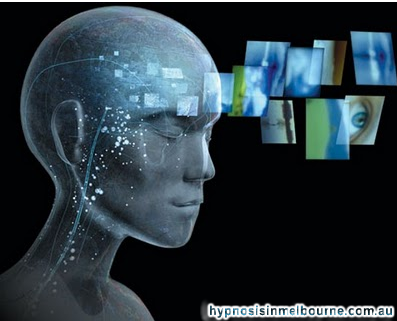A hypnotic suggestion can generate true and automatic hallucinations
A multidisciplinary group of researchers from Finland (University of Turku and University of Helsinki) and Sweden (University of Skövde) has now found evidence that hypnotic suggestion can modify processing of a targeted stimulus before it reaches consciousness. The experiments show that it is possible to hypnotically modulate even highly automatic features of perception, such as color experience. The results are presented in two articles published in PLoS ONE and International Journal of Clinical and Experimental Hypnosis. The nature of hypnotically suggested changes in perception has been one of the main topics of controversy during the history of hypnosis. The major current theories of hypnosis hold that we always actively use our own imagination to bring about the effects of a suggestion. For example the occurrence of visual hallucinations always requires active use of goal directed imagery and can be experienced both with and without hypnosis.
The study published in PLoS ONE was done with two very highly hypnotizable participants who can be hypnotized and dehypnotized by just using a one-word cue. The researchers measured brains oscillatory activity from the EEG in response to briefly displayed series of red or blue shapes (squares, triangles or circles). The participants were hypnotized and given a suggestion that certain shapes always have a certain color (e.g. all squares are always red). Participant TS-H reported constantly experiencing a change in color immediately when a suggested shape appeared on the screen (e.g. seeing a red square when the real color was blue). The researchers found that this experience was accompanied with enhanced high-frequency brain activity already 1/10 second after the stimulus appeared and it was only seen in response to the shapes mentioned in the suggestion. The second participant did not experience the color change or the enhanced activity. However, she reported a peculiar feeling when a suggestion-relevant shape was presented: “sometimes I saw a shape that was red but my brain told me it had a different color.”
This enhanced oscillatory brain activity is proposed to reflect automatic comparison of input to memory representations. In this case the hypnotic suggestion “all squares are red” led to a memory trace that was automatically activated when a square was presented. Furthermore, for the participant TS-H the effect was strong enough to override the real color of the square. The matching must have occurred preconsciously because of the early timing of the effect and the immediacy of the color change. Also, both participants reported having performed under posthypnotic amnesia without conscious memory of the suggestions.
In the article published in International Journal of Clinical and Experimental Hypnosis TS-H was tested in a similar type of setting, however, only behavioral data, including accuracy and response times in color recognition, were collected. These results further support that a hypnotic suggestion affects her color perception of targeted objects before she becomes conscious of them. Furthermore, TS-H was not capable of changing her experience of visually presented stable images without the use of hypnotic suggestions i.e. by using mere mental imagery.
Importantly, both of these experiments were done by using a posthypnotic suggestion. The effect was suggested during hypnosis but the experience was suggested to occur after hypnosis. Thus all the experiments were carried out while participants were in their normal state of consciousness.
This result indicates that all hypnotic responding can no longer be regarded merely as goal directed mental imagery. It shows that in hypnosis it is possible to create a memory trace that influences early and preconscious stages of visual processing already about 1/10 second after the appearance of a visual target. This result has important implications in psychology and cognitive neuroscience especially when studying visual perception, memory and consciousness.
The Finnish part of the research is funded by the Academy of Finland.


